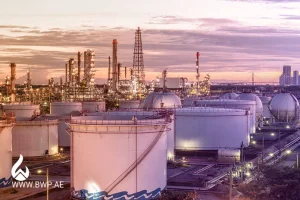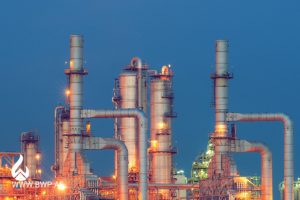What Are Petrochemicals?
Today’s world is the world of plastic products. The use of plastic products as everyday products has started almost 50 years ago. Before this product had limited uses and was not known to this extent. When scientists realized that this product could be used as a disposable container, the production capacity of plastic factories increased and different types of plastics with different structures were found. This has made the preservation and purification of the raw material for making plastic very important. In this text, we intend to enter into the discussion of plastic products; we will first start with the definition of this material and then examine its structure and its different types. Do you need storage facilities ? Just contact BWP
Base Oil Group 1 Products BWP : Base Oil SN150 , Base Oil SN600
Introduction to Petrochemicals
Petrochemicals are chemicals derived from petroleum or natural gas. Petrochemicals serve as raw materials for a very broad variety of industrial and consumer products. Unlike fuel, which is burned to produce energy, petrochemicals are utilized nearly entirely for the manufacture of such materials as plastics, fertilizers, detergents, solvents, adhesives, and synthetic fibers.
Although they are not visible in end-user products, petrochemicals are the foundation of the modern world. Nearly every sector—agriculture to aerospace—is reliant on petrochemicals for critical applications.
Historical Development of the Petrochemical Industry
The petrochemical industry began in the early 20th century. Though oil was discovered long before this time period, companies began isolating and refining chemicals from petroleum around the 1920’s and 1930’s to make synthetic materials. The Second World War proved to be a major catalyst for the industry in increasing the demand for synthetic rubber, synthetic explosives, and alternative fuels, which are all derived from petrochemicals.
By the mid-20th century the petrochemical industry had developed fully from its niche to a world industry. Countries with abundance of oil and gas resources including the Gulf States, Russia, and the United States developed complex refined and downstream infrastructures quickly. Today, countries like the UAE are still leaders in developing integrated storage, refining, and global trading which Black Water Petrochemical has established as a part of purposeful concentration of the business.

For more information, read the article linked below: Top Safety Standards for Oil Storage Facilities Around the World
Basic Chemical Structure of Petrochemicals
Basically, petrochemicals consist of organic molecules composed primarily of carbon and hydrogen atoms. The molecular structures range from as straightforward as hydrocarbons to more complicated combinations containing oxygen, nitrogen, sulfur, or chlorine atoms.
The building blocks of the molecular structures of petrochemicals are of three fundamental hydrocarbon families:
Alkanes (Paraffins) – Saturated hydrocarbons that contain single bonds, such as methane, ethane, propane, and butane.
Alkenes (Olefins) – One or more double-bonded unsaturated hydrocarbons, e.g., ethylene and propylene.
Aromatics – Ring hydrocarbons like benzene, toluene, and xylene, which are stable but highly reactive.
These simple structures provide the basis for more complicated chemical reactions, leading to the production of a vast number of synthetic compounds.
Feedstocks Used in Petrochemical Production
Feedstocks are the primary ingredients to make petrochemicals, usually derived from oil refining or natural gas processing. Petrochemical feedstocks include:
Naphtha– A light distillate from crude oil that is the primary feedstock used in steam cracking to produce ethylene and other olefins.
Natrual Gas Liquids (NGL) – Ethane, propane, butane, used for the most part in North America to produce ethylene.
Gas Oil and Condensates – utilized in catalytic cracking for heavier hydrocarbons.
Methane- converted into synthesis gas (syngas), subsequently converted to methanol or ammonia.
The choice of feedstocks are often more dependent on regional availability and price, as well as the target product. At Black Water Petrochemical our versatile infrastructure supports optimal handling of multiple feedstocks based on market needs.
Major Types of Petrochemicals
No more than two types of petrochemicals exist. Petrochemicals are divided into two types based on their origin and use.
Primary petrochemicals
These chemicals exist because their precursors are directly obtained from raw materials:
Olefins – ethylene, propylene, and butadiene. Ethylene is the building block of polyethylene (which is used in packaging) and propylene is used for polypropylene.
Aromatics – benzene (which is used to make styrene), toluene (used in solvents), and xylenes (used to make polyester fibers).
Synthesis gas (syngas) – a mixture of carbon monoxide and hydrogen, used to make ammonia (for fertilizers), methanol, and other chemicals.
Secondary petrochemicals
These petrochemicals are produced from primary petrochemicals and further chemical processing:
Plastics and Polymers – polyethylene (PE), polypropylene (PP), polyvinyl chloride (PVC), polystyrene (PS), among others.
Synthetic Rubbers – such as styrene-butadiene rubber (SBR), used in tires and other industrial products.
Surfactants and Detergents – used in cleaning agents and personal care.
Solvents and industrial chemicals – such as acetone, phenol, and formaldehyde.
For more information, read the article linked below: The Role of Modern Storage Facilities in Crude Oil Preservation
Differences Between Primary and Secondary Petrochemicals
An understanding of primary versus secondary petrochemicals is important to parties in trade, refining, and storage.
Primary petrochemicals are the immediate derivative products of hydrocarbon feedstocks. They are the raw material from which a great diversity of chemical change starts.
Secondary petrochemicals are processed further through chemical steps into these primary chemicals. Secondary chemicals are more directly to final end use and have more specific market values in which they are traded.
In Black Water Petrochemical, our plan includes incorporating first-order and secondary product streams into our operations in an effort to serve the constantly changing needs of global customers within industries.

For more information, read the article linked below: The difference between base oil 4 cSt, base oil 6 cSt, and base oil 8cSt
Industrial Applications of Petrochemicals
The real-world applications of petrochemicals are both vast and vital. Their presence can be seen in:
- Agriculture – Fertilizers (urea, ammonia), pesticides, and herbicides.
- Healthcare – Pharmaceuticals, surgical gloves, diagnostic equipment.
- Textiles – Synthetic fibers like polyester, nylon, and acrylic.
- Construction – Insulation materials, PVC pipes, adhesives, sealants.
- Automotive – Tires, dashboards, airbags, and fuel additives.
- Electronics – Semiconductors, insulation, and casing materials.
- Consumer Goods – Packaging, detergents, cosmetics, and more.
This universality makes petrochemicals indispensable in driving economic growth and enhancing quality of life worldwide.
Future Trends in Petrochemical Technologies
The petrochemical industry is experiencing some significant changes relating to sustainability, technologies, and demand. Here are a few trends that will shape the future of petrochemicals:
Decarbonization of Feedstocks – There is interest in bio-based and renewable feedstocks to reduce reliance on fossil fuels.
Circular Economy and Recycling – Chemical recycling of plastics and the production of recyclable polymers are underway and gaining momentum.
Digitalization and AI – Predictive analytics and automated manufacturing will allow for more efficiency and to lower operational risk.
Carbon Capture and Utilization (CCU) – Carbon capture technologies are starting to be integrated in petrochemical manufacturing processes, and becoming a sustainable option.
Hydrogen Economy Integration – Exploring the synergies of hydrogen production and downstream petrochemical synthesis.
As a trading and storage leader, Black Water Petrochemical needs to embrace these trends, and continually put ourselves in front of the game. We invest in next generation infrastructure and work to develop digital tools to ensure we remain resilient and adaptable to a changing global market.
Conclusion
A bright future can be imagined for plastic products. These products can be used to make advanced computers, they can be used to make new fertilizers that are biodegradable and provide necessary minerals to the soil. However, chemical engineers and chemical scientists can create a bright future by manipulating these structures and compounds. Blackwater is one of the leading companies in the field of supplying petrochemical products. Our experts are always striving to achieve customer satisfaction, hence they are sensitive to providing first-class raw materials and checking them regularly.



No comment